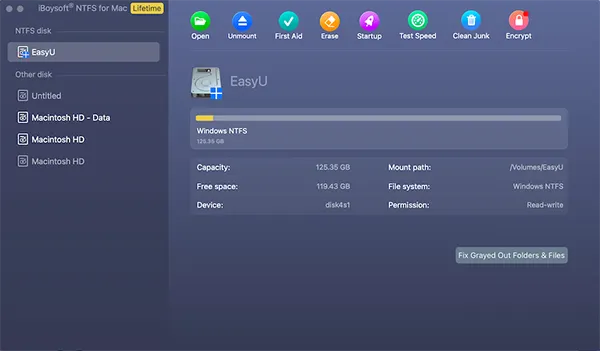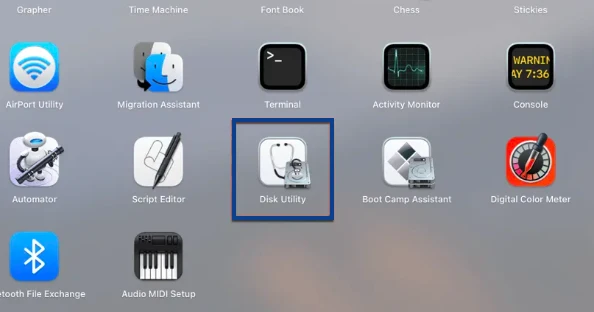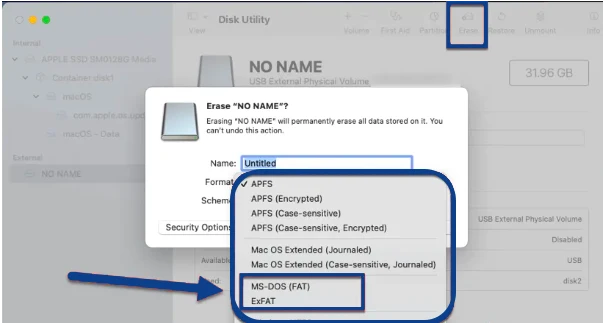The Complete Guide to Read and Write NTFS Drives on macOS Sonoma
NTFS (New Technology File System), introduced by Microsoft with the Windows NT operating system, is a proprietary file system designed for high performance, reliability, and security.
It is characterized by file system encryption, disk quotas, file system journaling, file compression, support for large sizes and volumes, and so forth.
However, historically, the Mac operating system has had limited support for the New Technology File System, often only providing read-only access to NTFS-formatted drives out of the box.
This means you could view and copy files from these drives but couldn’t write to these NTFS-formatted drives directly on the Mac operating system, even the latest macOS 14 Sonoma.
Fret not, as there are reliable solutions available to bridge this gap and enable seamless interaction with these drives on your computer.
In this guide, we’ll offer effective methods to help you read and write NTFS drives on macOS Sonoma easily.
Does macOS 14 Sonoma Support Windows NTFS?
macOS 14 Sonoma brings a plethora of exciting features and improvements, but one question persists among users: does it support read and write access to Windows NTFS drives?
Unfortunately, as of the current iteration, It does not natively offer this functionality, just as the previous macOS Ventura/Monterey/Big Sur did.
That’s to say, macOS 14 Sonoma only allows for read access to these drives but still lacks native NTFS write support, restricting you from editing, renaming, creating, deleting, and moving files on these drives on your computer.
Solutions to Read and Write NTFS Drives on macOS 14 Sonoma
While Sonoma lacks built-in support for NTFS write capabilities, there are still certain feasible solutions to empower you with full read-write access to these drives on macOS Sonoma.
It’s worth mentioning that you can enable full read-write access to NTFS drives on macOS Monterey/Big Sur via Mac Terminal, a third-party NTFS for Mac software, or NTFS drive reformatting.
However, starting from macOS 13 Ventura, Terminal commands can no longer be used to enable NTFS write support, and this restriction persists in Mac operating system 14 Sonoma. Thus, we’ll focus on the other two solutions in the following discussion to guide you on how to read and write NTFS drives on the macOS Sonoma version.
Solution 1 Enable Full Read and Write Access to NTFS Drives on macOS Sonoma with iBoysoft NTFS for Mac
If you need to access and edit necessary files or documents on your NTFS drive on Mac, you can use a third-party NTFS for Mac software to assist you in handling this task efficiently.
While many NTFS for Mac utilities, both free and paid, are available for NTFS read-write support on the Mac device, you might encounter issues with your selected NTFS for Mac software like SL-NTFS following an upgrade to macOS Sonoma, as it may not yet be updated to support the new operating system.
If you find that your current NTFS for Mac solution fails to enable NTFS writing on macOS 14 Sonoma, consider switching to iBoysoft NTFS for Mac.
This software stands out as a top-notch NTFS for Mac mounter that supports various macOS operating systems ranging from macOS High Sierra to macOS Sonoma and works seamlessly on both Intel-based and ARM-based Mac devices to easily mount your Windows NTFS drives in read-write mode, granting you complete read and write control over the NTFS drive within the macOS environment without drive erasure.
- Step 1: Free download and install iBoysoft NTFS for Mac from its official website and launch it on your Mac.
- Step 2: Connect your NTFS drive to your Mac computer.
- Step 3: iBoysoft NTFS for Mac will automatically mount this connected NTFS drive and make it readable and writable on your Mac. Now, you are able to copy, write, edit, rename, delete, and create files on the NTFS drive on macOS freely just like you are using a native APFS or HFS+ drive.

Solution 2 Reformat Your NTFS Drive to a Mac-Compatible File System
If your drive is empty or doesn’t contain confidential data, you can opt to format it to a Mac-compatible file system (like FAT32, exFAT, APFS, etc.) for Mac use. If you plan to utilize the same disk on both Mac and Windows computers, you can format the drive to either FAT32 or exFAT.
However, if you intend to exclusively use the drive on macOS Sonoma, APFS is a suitable choice. Now, let’s proceed with drive formatting from a New Technology File System to a Mac-compatible file system.
- Step 1: Attach the NTFS drive to your Mac, ensuring it doesn’t hold any vital files. If it does, create a backup of these files beforehand, as drive formatting will wipe out all the data stored on the drive.
- Step 2: Click on the Launchpad icon situated in the Mac Dock, and then locate and select Other, followed by Disk Utility.

- Step 3: Select the NTFS drive you want to reformat from the left sidebar in Disk Utility and click the Erase button at the top toolbar.
- Step 4: Choose a Mac-compatible file system, rename the drive if needed, set a scheme, and then click the Erase button.

- Step 5: Remain patient until the formatting procedure finishes. Once done, you’ll be able to read and write to the reformatted Mac-friendly drive on your Mac.
Conclusion
While macOS Sonoma does not inherently support writing NTFS drives, there are alternative methods, either through third-party applications like iBoysoft NTFS for Mac or performing drive erasure, to overcome this limitation.
It’s required to select the solution that best aligns with your requirements in terms of ease of use, reliability, and performance.
